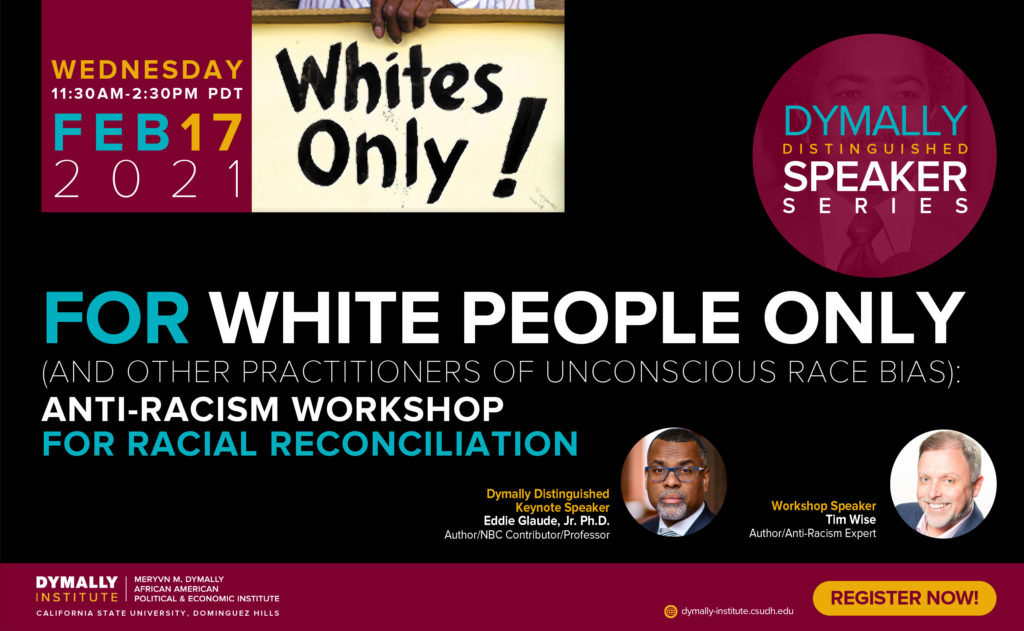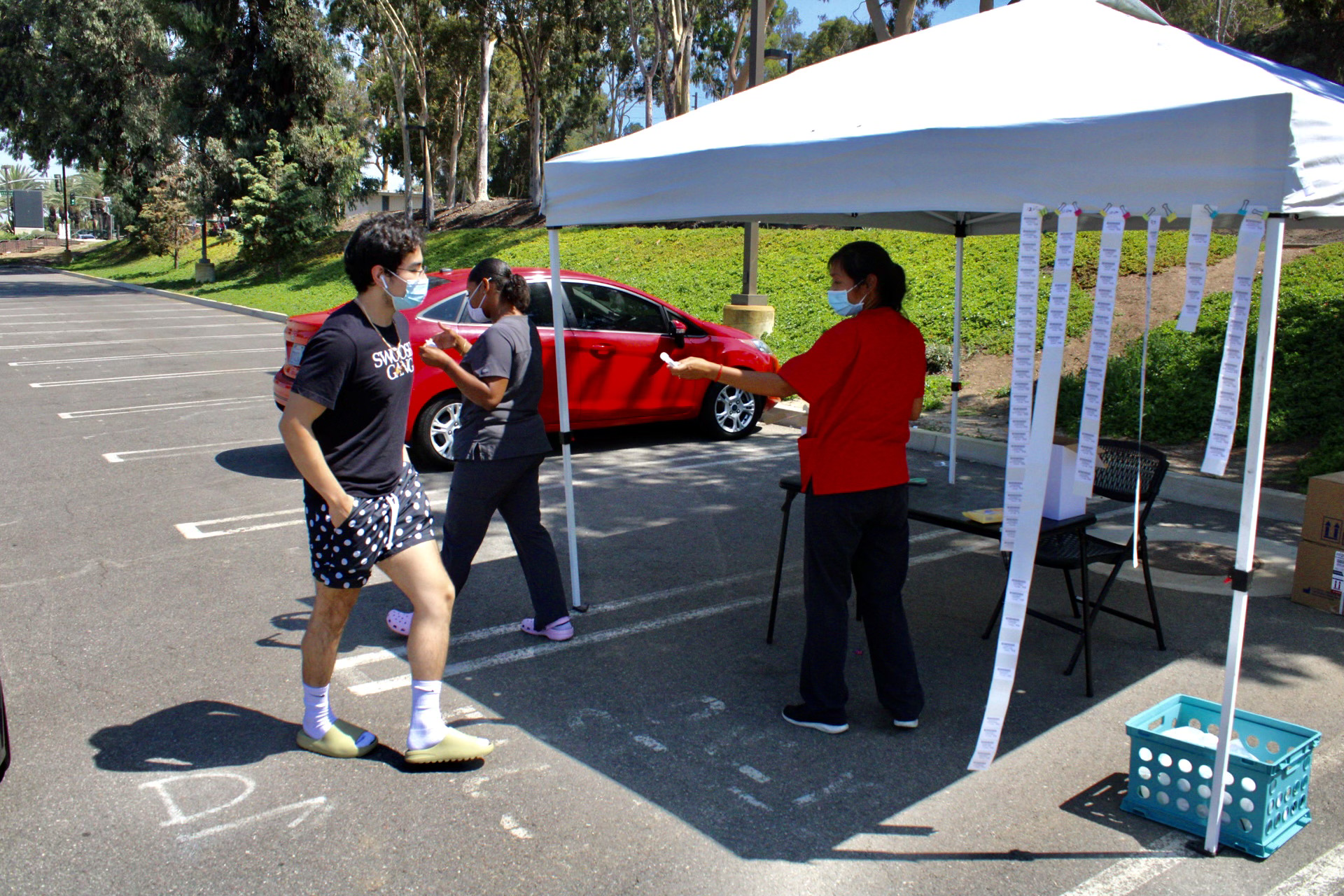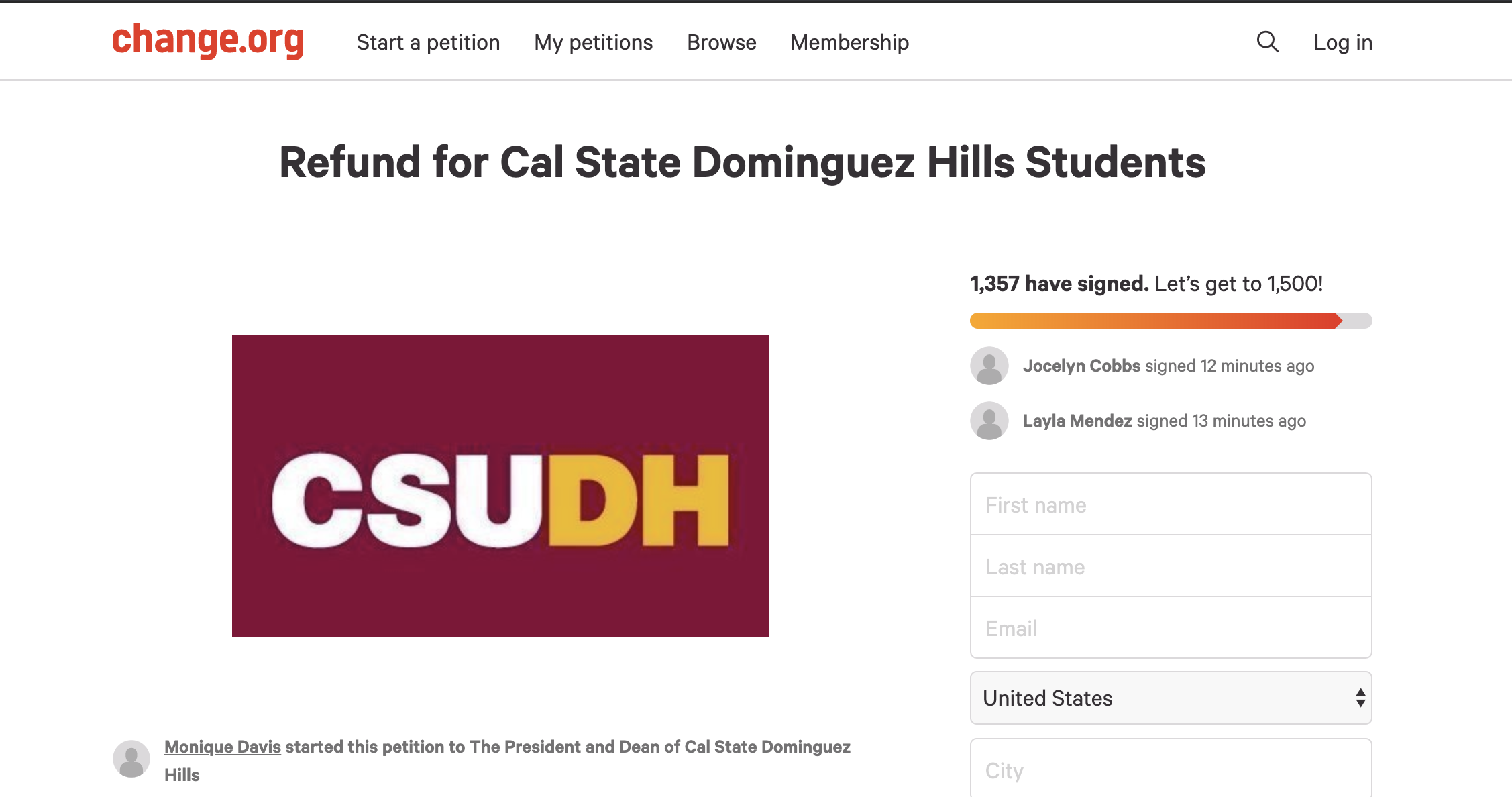The first of three anti-racism workshops sponsored by the Dymally Institute was Wednesday. Photo courtesy of CSUDH.
By Nova Blanco-Rico, Art Director and Staff Reporter
Racial inequality in American education today is not a product of a slow, steady accumulation of events or decisions but was envisioned by the white men who founded this country, prominent anti-racist educator and author Tim Wise told a virtual audience of about 500 people at an anti-racism workshop Wednesday.
Wise and Eddie Glaude, Jr., a New York Times bestselling author and professor of Princeton University, were the featured guest speakers at the event, sponsored by CSUDH’s Mervyn M. Dymally African American Political and Economic Institute Dymally Institute.
Tilted “For White People Only (and other practitioners of unconscious racial bias” the workshop was the first of three anti-racism workshops for racial reconciliation events planned by the institute.
Following an introductory message by CSUDH President Thomas A. Parham about the need for understanding one’s privilege and how there are aspects of systemic policies that bring disadvantage for a community. Glaude spoke. The chair of the department of African American Studies at Princeton University, Glaude has written several books discussing racial issues in the United States. His latest is “Begin Again: James Baldwin’s America and Its Urgent Lessons for Our Own,” which analyzes American writer James Baldwin’s work with the theme of racial inequality.
Glaude spoke for about 45 minutes and among the topics he addressed was the assumption that people of color are the ones who need to change in order to achieve equality.
“We have to understand that the problem isn’t black and brown folk, the problem isn’t that we are in a tangled web of pathology,” said Glaude. “ The problem rests with this idea that because of the color of your skin that somehow you believe you(are)accorded advantage.”
Glaude took several questions after his talk, Adrienne Konigar-Macklin asked that since both main American political parties have a litany of broken promises when it comes to Black Americans, is there a better path that will “align with our needs.”
Glaude’s response reworked the adage that all politics is local:
“If we start turning our attention to the local, which has everything to do with the police, everything to do with education, everything to do with budgets,” he responded, “then we get into concrete issues that get us outside of what the Democratic Party thinks, the Republican Party is thinking, what NAACP is thinking, what the Urban League is thinking.”
Wise, who is white and has authored books such as “Under the Affluence,” and “Dear White America: Letters to a New Minority, focused largely on education.
“What’s the history of the history of education in this country?” Wise asked rhetorically. “It’s the history of deliberate white supremacy and the marginalization of black and brown people.”
His direct, non-sugar coated words matched the name of the event, which apparently raised some eyebrows for using a photo in promotional materials of a sign with the word “Whites Only!” a reference to the ubiquitous signs on the windows of white-owned business during the era of Jim Crow segregation in America.
We have to understand that the problem isn’t black and brown folk, the problem isn’t that we are in a tangled web of pathology. The problem rests with this idea that because of the color of your skin that somehow you believe you(are)accorded advantage.”
Eddie Glaude Jr.
Dr. Anthony Samad, the director of the Dymally Institute, didn’t seem to mind.
“(The title) was intentional as now is not the time to be passive about racism,” he wrote in a Feb. 8 email that was sent by the division of Academic Affairs to college faculty, staff and students. “It is time for EVERYBODY to be uncomfortable about the time in which we live. What way to bring urgency to the conversation than to remind us what racism really looks like by tying it to a vestige of the past. “
The next two anti-racism workshops also have titles that will use “symbolic vestiges of American racism to drive the discussion,” Samad said in his Feb.8 email.
Speaking of the “For White People Only sign, Samad said it is as “stinging and offensive today as it was 50 years ago. But it reminds us of the circumstances and conditions that created a separate and unequal society.
“Racism, in and of itself, is offensive,” Samad continued in his email. “ Being offended by a sign that was pervasive in this society for over 80 years, should bring into focus the events of the past few years. We should be just as offended by our society’s failures to confront these racial injustices.”
“Now is not the time to massage guilt or get sensitive around a vestige symbol that we all know happens EVERY minute of the day, EVERY day, somewhere in America. It is the time for us ALL, to … UNITE to stop it from continuing to happen. Anything else is a distraction. It’s just a sign to get you to think.”
The point of the workshop, Samad told the Bulletin is not to call out overt racists; it is about calling on everyone to question whether their silence is complicity.
“We’re concerned about the folk who don’t speak up [against] racism,” Samad said. “The folks who take a passive approach to racism and sit silent.
“If you consider yourself tolerant, then at least join the workshop to see what the conversation is,” Samad continued. “Don’t try to prejudge the conversation, because there is no intimidation factor here.”
Today’s workshop was the latest in a series of events and decisions at CSUDH since the May 25 killing of George Floyd to get the campus to begin a serious conversation about race and to examine if, and to what extent, racism exists within the university as an institution.
On July 20, after many campus departments had issued statements of solidarity with the movement for Black lives, President Thomas A. Parham announced a racial reconciliation task force that would help identify ways in which this university could “ achieve greater degrees of congruence between our aspirational goals and policies, practices and institutional customs that frame our educational enterprise.”


